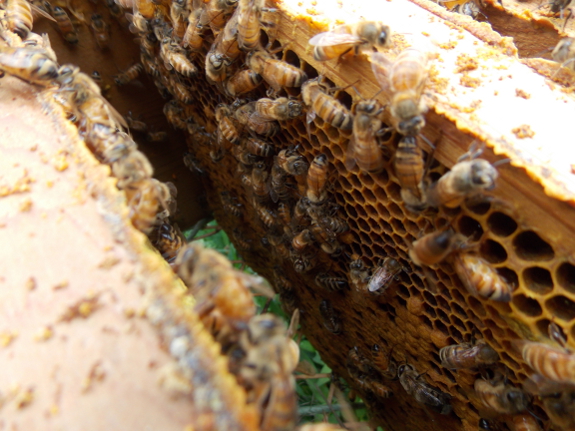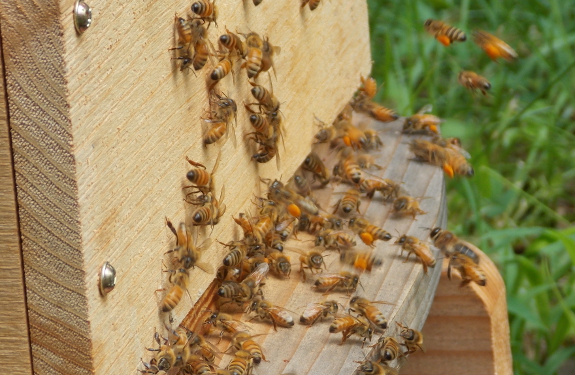
History of honeybee diseases
 One of the most useful threads running through Bees in America
was the history of pests and diseases that have troubled American hives
nearly from the beginning. Foulbrood and wax moths were the
biggest issues in the early nineteenth century, and damage by the
greater wax moth seems to have been even more extreme that varroa moths
and colony collapse disorder are today. In fact, 80% of the
apiaries around Boston were abandoned by 1809 due to depredations of the
greater wax moth.
One of the most useful threads running through Bees in America
was the history of pests and diseases that have troubled American hives
nearly from the beginning. Foulbrood and wax moths were the
biggest issues in the early nineteenth century, and damage by the
greater wax moth seems to have been even more extreme that varroa moths
and colony collapse disorder are today. In fact, 80% of the
apiaries around Boston were abandoned by 1809 due to depredations of the
greater wax moth.
Being able to inspect
hives made a big difference in fighting both of these early pests once
Langstroth developed a hive with movable frames, and foulbrood became
even less common after a 1923 law outlawed bee gums and allowed bee
inspectors to burn hives when signs of the disease were apparent.
However, foulbrood remained a major problem among American beekeepers
until antibiotics were developed to fight the bacterium after World War
II. Unfortunately, some strains of the problematic microorganisms
became resistant to antibiotics by the 1990s, which led beekeepers to
begin using Integrated Pest Management, medicating hives only when signs
of foulbrood were evident. A similar strategy was used for varroa
mites, which entered the scene along with tracheal mites in the 1980s.
 Pests
and diseases weren't the only hurdle honeybees had to face,
though. Pesticides drifting from farmer's fields into bee
territory became a major problem around the 1950s, and continued
throughout the second half of the twentieth century. The federal
government developed some methods of remunerating beekeepers for their
dead hives, but cash payouts didn't help the bees themselves.
Eventually, the worst pesticide, which came in grains that looked like
pollen to bees, was outlawed.
Pests
and diseases weren't the only hurdle honeybees had to face,
though. Pesticides drifting from farmer's fields into bee
territory became a major problem around the 1950s, and continued
throughout the second half of the twentieth century. The federal
government developed some methods of remunerating beekeepers for their
dead hives, but cash payouts didn't help the bees themselves.
Eventually, the worst pesticide, which came in grains that looked like
pollen to bees, was outlawed.
Horn's book ended with
the small hive beetle hitting Florida, Georgia, North Carolina, and
South Carolina in 1998, so no mention was made of colony collapse
disorder, which started showing up two years after the book was
published. It's interesting to put our current beekeeping woes in
perspective, though, and to realize that keeping bees in America has
always been a struggle against pests, diseases, and chemicals. As
I'll explain in tomorrow's post, trying out different bee varieties can
be part of the solution when new issues rear their ugly heads.
| This post is part of our Bees in America lunchtime series.
Read all of the entries: |
Want more in-depth information? Browse through our books.
Or explore more posts by date or by subject.
About us: Anna Hess and Mark Hamilton spent over a decade living self-sufficiently in the mountains of Virginia before moving north to start over from scratch in the foothills of Ohio. They've experimented with permaculture, no-till gardening, trailersteading, home-based microbusinesses and much more, writing about their adventures in both blogs and books.
Want to be notified when new comments are posted on this page? Click on the RSS button after you add a comment to subscribe to the comment feed, or simply check the box beside "email replies to me" while writing your comment.
